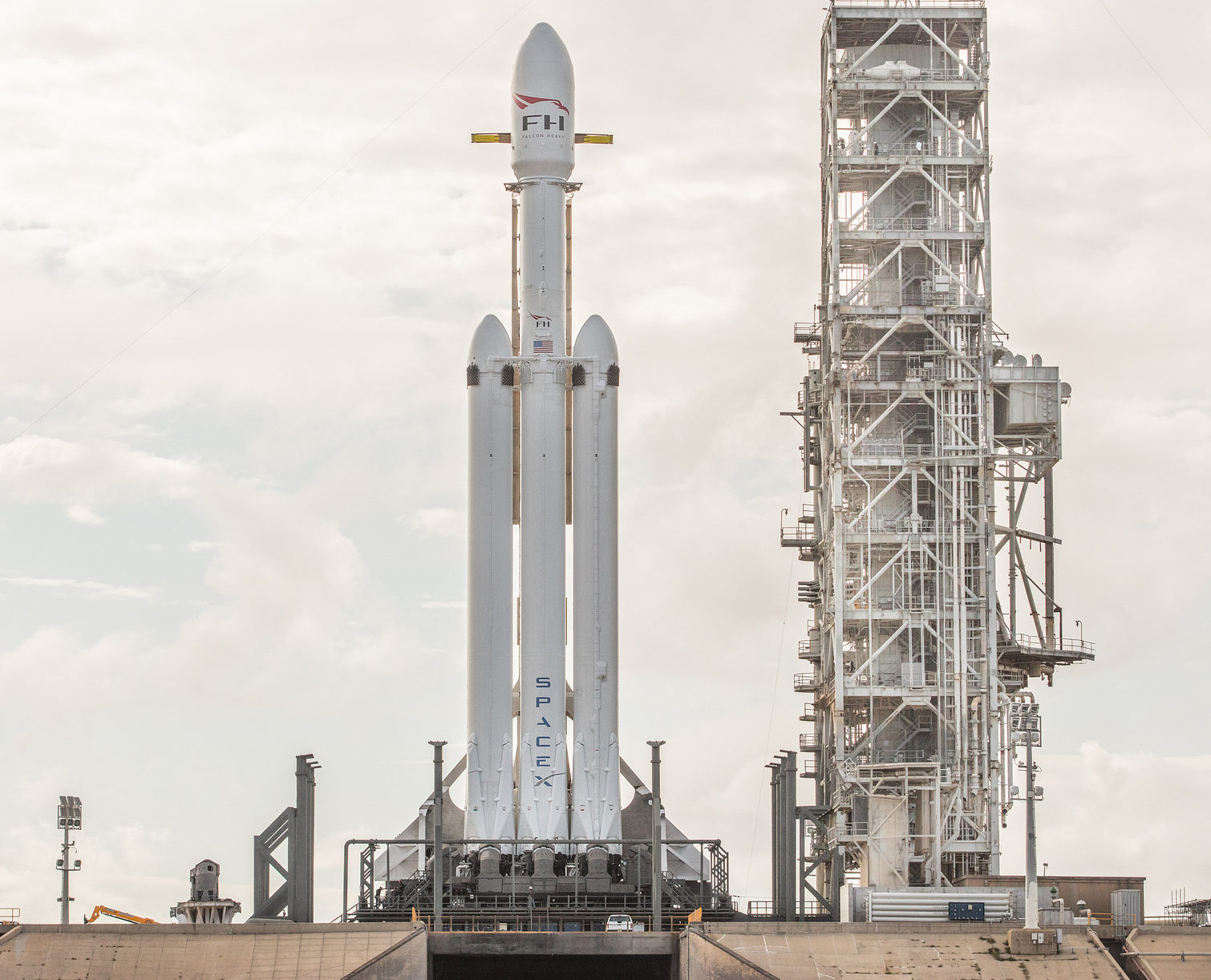

News
SpaceX gets ready to fire up Falcon Heavy for the first time at Cape Canaveral
As it gradually nears a launch date sometime in late January or early February, SpaceX’s new super-heavy launch vehicle (SHLV) Falcon Heavy has weathered a number of schedule delays in preparation for a historic and crucial moment – its first static fire/test ignition that’s currently scheduled for Tuesday, January 16, beginning at 4pm EST (2100 GMT).
Those focused on the gritty details of SpaceX’s prelaunch procedures will have immediately noted how different Falcon Heavy’s operations are when compared with SpaceX’s workhorse rocket and Heavy’s progenitor, Falcon 9. For a typical launch of Falcon 9, the rocket and payload will normally arrive at the given launch pad around a month or so before the anticipated launch date. Next, the satellite payload is encapsulated inside Falcon 9’s payload fairing, typically two or so weeks before launch. Pad facilities would be thoroughly examined after the previous launch to remedy any wear and tear and ensure that it is in good working order ahead of the next mission. Approximately a week before launch, Falcon 9’s first and second stages are mated together inside the pad’s integration facilities, the pad’s Transport/Erector/Launcher (TEL) is rolled into the integration facilities, and the Falcon 9 booster and second stage (sans payload) are mounted onto the TEL. Finally, the TEL and rocket are rolled out to the launch pad for a brief 3-5 second static fire around 5-7 days before launch. After testing is completed, the TEL is rolled back to the integration facilities, the payload fairing and payload are attached to the rocket, and the whole stack is once more rolled back to the pad, ready for launch.
- The TEL seen at LC-39A in early 2017. (SpaceX)
- The base of the TEL now sports multiple additional launch clamps (large grey protrusions) that will be needed for Falcon Heavy’s three first stage cores. (SpaceX)
- Finally, the fairing is transported vertically to the HIF, where it can be flipped horizontal and attached to its rocket. (Reddit /u/St-Jed-of-Calumet)
For a used booster, this is the sum total of the prelaunch procedures it will go through at the pad, after recovery and refurbishment. For all new boosters, however, SpaceX currently conducts a thorough slate of tests for all Merlin 1D and MVac (2nd stage) rocket engines, as well as both the integrated first and second stages at its McGregor, Texas facilities. These tests last far longer than those conducted at the launch pad, and typically run for the full length of a launch in order to better simulate the stresses flight hardware will end up experiencing. In other words, new Falcon 9 hardware always has to make it through hundreds of seconds of live firing and post-test analysis before finally being shipped to SpaceX’s launch facilities, where it conducts the aforementioned brief static fire at the pad.
A whole new bird of prey
To put it simply, Falcon Heavy is a whole different animal when it comes to prelaunch testing. Due to the rocket’s sheer size and power in its fully integrated state, McGregor simply does not have the capability to conduct the same tests it does with Falcon 9. While two of the first Heavy’s three first stage boosters are modified flight-proven Falcon 9s (from Thaicom-8 and CRS-9), the center core required a far more extensive suite of changes from a normal Falcon 9 in order to survive the added stresses it would experience during a Falcon Heavy launch. Although the full-up vehicle could not be tested in Texas with a full-length firing, each of its three first stages and upper stage went through the same tests as a normal Falcon 9. Before that, both side core and center core structural test articles (STA) went through a large amount of mechanical stress testing to verify that Falcon Heavy’s re-engineered design would be able to easily survive the stresses of launch and then some. In short, months and months of work have gone into the hardware that both preceded and makes up the Falcon Heavy rocket currently vertical and weeks from launch at Kennedy Space Center.
However, SpaceX has learned the hard way that simulation and partial physical testing can only go so far, and cannot be completely trusted when it comes to flying new hardware, as evidenced by the both Falcon 1 and the company’s several first attempts at recovering a Falcon 9 booster (intact, at least…). Even the best and most brilliant engineers and technicians can only do so much without testing the real thing in real conditions, something that can often result in unintended failures – especially the case with new technologies. Falcon Heavy is indeed a new technology to some extent or at least incorporates numerous new technologies that SpaceX has little to no operational experience with. These and relatively untried aspects include the simultaneous ignition and operation of twenty seven already powerful Merlin 1D engines, new stresses on the center booster during launch, a unique non-explosive side booster separation mechanism, the also near-simultaneous recovery of three first stages, and a second stage tasked with placing an unusual payload in the highest orbit SpaceX has yet to attempt.
Hence Elon Musk’s aggressive expectation maintenance over the last year or so, in which he spared no punches while imparting upon several audiences the likelihood that Falcon Heavy’s first launch would fail entirely, and maybe even destroy the launch pad. In reality, SpaceX is clearly doing everything in their power to ensure that the massive rocket’s first launch is a total success.
- Falcon Heavy vertical at Pad 39A on Thursday, January 11. After a successful rehearsal, the static fire was scrubbed due to a small hardware bug. (Tom Cross/Teslarati)
- The white bars in this photo are half of Falcon Heavy’s seperation mechanism. A number of actuators take the place of the more common solid rocket motors used with vehicles like the Delta IV Heavy. (SpaceX)
- Falcon Heavy’s three boosters and 27 Merlin 1D engines on full display. (SpaceX)
What’s next for Falcon Heavy?
Recent delays to the vehicle’s first static fire test at SpaceX’s Launch Complex 39A are strong examples of this cautious approach. While fans and outsiders alike may be nipping at the bit for the vehicle’s long-awaited inaugural static fire and launch, SpaceX clearly is laser-focused on very thoroughly testing the vehicle and is exerting great caution. After the first static fire attempt was delayed, reportedly due to a buggy launch clamp, SpaceX had nevertheless completed its first (presumably successful) wet dress rehearsal (WDR), which saw the vehicle prepared for launch with a full load of propellant and other miscellaneous fluids. After a brief period back horizontal at the pad, likely to repair whatever fault initially caused the delay, Falcon Heavy has been vertical at the pad for the last several days. Intriguingly, albeit unsurprisingly, tank venting was reported early Sunday by local observers. This indicates that SpaceX conducted at least one additional wet dress rehearsal with Falcon Heavy, likely both contributing to an additional delay of the replacement static fire date (Monday) and solidifying confidence in the new test date, Tuesday, January 16.
Compared with the results of the first WDR (a three-day delay), the one day delay that followed Sunday’s rehearsal is great news for what is effectively a mature launch vehicle prototype. SpaceX’s confidence is clearly growing, and while all delays of the static fire will likely push back the launch date at least as much, Falcon Heavy will almost certainly find itself days away from its inaugural liftoff sometime in very late January or February 2018.
Follow along live as Teslarati’s launch photographer Tom Cross covers Falcon Heavy’s exciting series of events while they happen on our Instagram.
Elon Musk
Tesla investors will be shocked by Jim Cramer’s latest assessment
Jim Cramer is now speaking positively about Tesla, especially in terms of its Robotaxi performance and its perception as a company.
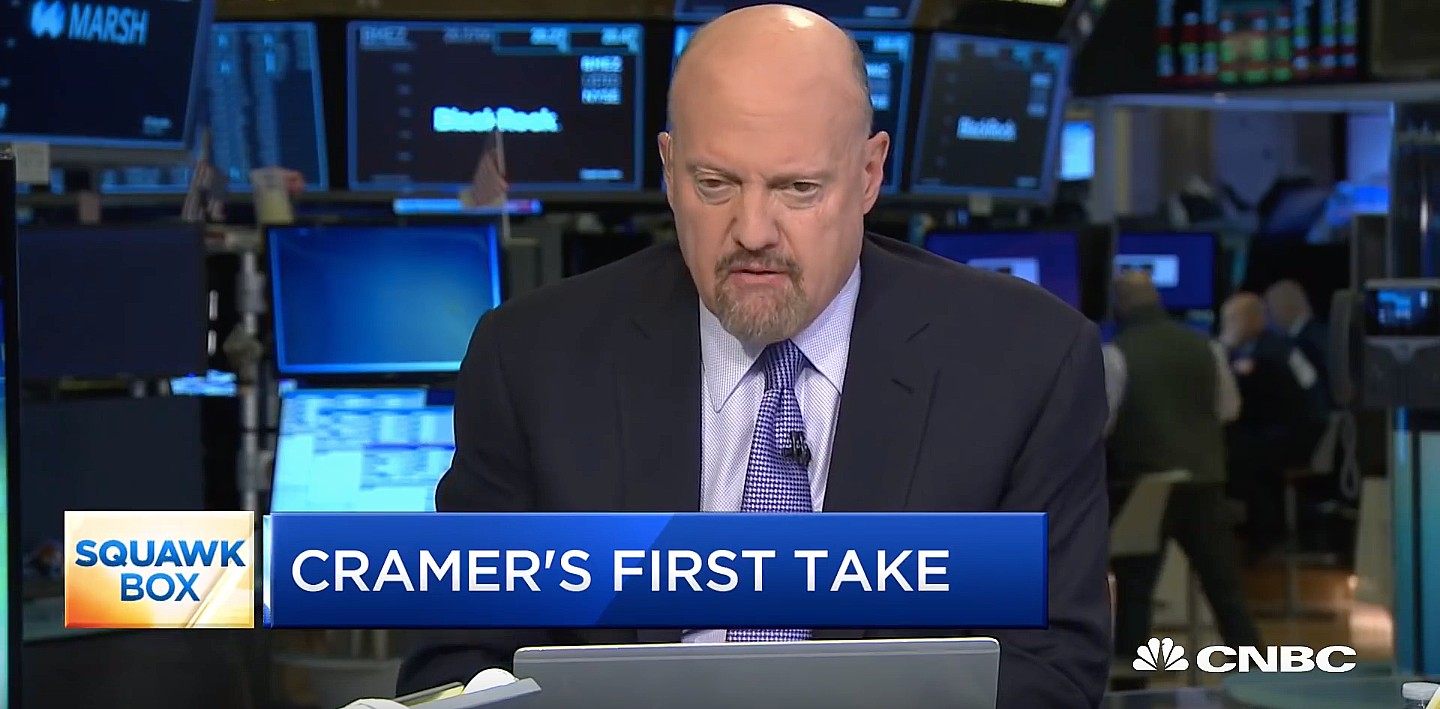
Tesla investors will be shocked by analyst Jim Cramer’s latest assessment of the company.
When it comes to Tesla analysts, many of them are consistent. The bulls usually stay the bulls, and the bears usually stay the bears. The notable analysts on each side are Dan Ives and Adam Jonas for the bulls, and Gordon Johnson for the bears.
Jim Cramer is one analyst who does not necessarily fit this mold. Cramer, who hosts CNBC’s Mad Money, has switched his opinion on Tesla stock (NASDAQ: TSLA) many times.
He has been bullish, like he was when he said the stock was a “sleeping giant” two years ago, and he has been bearish, like he was when he said there was “nothing magnificent” about the company just a few months ago.
Now, he is back to being a bull.
Cramer’s comments were related to two key points: how NVIDIA CEO Jensen Huang describes Tesla after working closely with the Company through their transactions, and how it is not a car company, as well as the recent launch of the Robotaxi fleet.
Jensen Huang’s Tesla Narrative
Cramer says that the narrative on quarterly and annual deliveries is overblown, and those who continue to worry about Tesla’s performance on that metric are misled.
“It’s not a car company,” he said.
He went on to say that people like Huang speak highly of Tesla, and that should be enough to deter any true skepticism:
“I believe what Musk says cause Musk is working with Jensen and Jensen’s telling me what’s happening on the other side is pretty amazing.”
Tesla self-driving development gets huge compliment from NVIDIA CEO
Robotaxi Launch
Many media outlets are being extremely negative regarding the early rollout of Tesla’s Robotaxi platform in Austin, Texas.
There have been a handful of small issues, but nothing significant. Cramer says that humans make mistakes in vehicles too, yet, when Tesla’s test phase of the Robotaxi does it, it’s front page news and needs to be magnified.
He said:
“Look, I mean, drivers make mistakes all the time. Why should we hold Tesla to a standard where there can be no mistakes?”
It’s refreshing to hear Cramer speak logically about the Robotaxi fleet, as Tesla has taken every measure to ensure there are no mishaps. There are safety monitors in the passenger seat, and the area of travel is limited, confined to a small number of people.
Tesla is still improving and hopes to remove teleoperators and safety monitors slowly, as CEO Elon Musk said more freedom could be granted within one or two months.
News
Tesla launches ultra-fast V4 Superchargers in China for the first time
Tesla has V4 Superchargers rolling out in China for the first time.
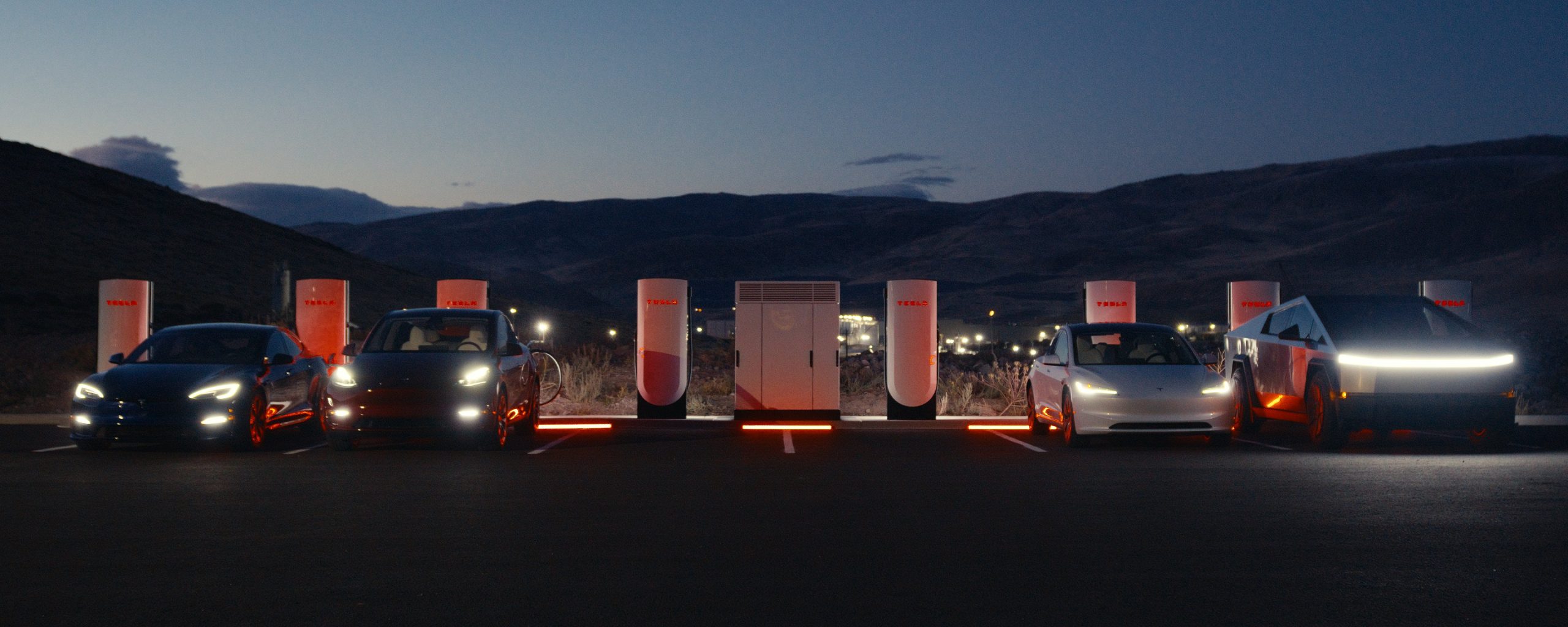
Tesla already has nearly 12,000 Supercharger piles across mainland China. However, the company just initiated the rollout of the ultra-fast V4 Superchargers in China for the first time, bringing its quick-charging piles to the country for the first time since their launch last year.
The first batch of V4 Superchargers is now officially up and running in China, the company announced in a post on Chinese social media outlet Weibo today.
The company said in the post:
“The first batch of Tesla V4 Superchargers are online. Covering more service areas, high-speed charging is more convenient, and six-layer powerful protection such as rain and waterproof makes charging very safe. Simultaneously open to non-Tesla vehicles, and other brands of vehicles can also be charged. There are more than 70,000 Tesla Superchargers worldwide. The charging network layout covers 100% of the provincial capitals and municipalities in mainland China. More V4 Superchargers will be put into use across the country. Optimize the charging experience and improve energy replenishment efficiency. Tesla will accompany you to the mountains, rivers, lakes, and seas with pure electricity!”
The first V4 Superchargers Tesla installed in China are available in four cities across the country: Shanghai, Zhejiang, Gansu, and Chongqing.

Credit: Tesla China
Tesla has over 70,000 Superchargers worldwide. It is the most expansive and robust EV charging network in the world. It’s the main reason why so many companies have chosen to adopt Tesla’s charging connector in North America and Europe.
In China, some EVs can use Tesla Superchargers as well.
The V4 Supercharger is capable of charging vehicles at speeds of up to 325kW for vehicles in North America. This equates to over 1,000 miles per hour of charging.
Elon Musk
Elon Musk hints at when Tesla could reduce Safety Monitors from Robotaxi
Tesla could be reducing Safety Monitors from Robotaxi within ‘a month or two,’ CEO Elon Musk says.
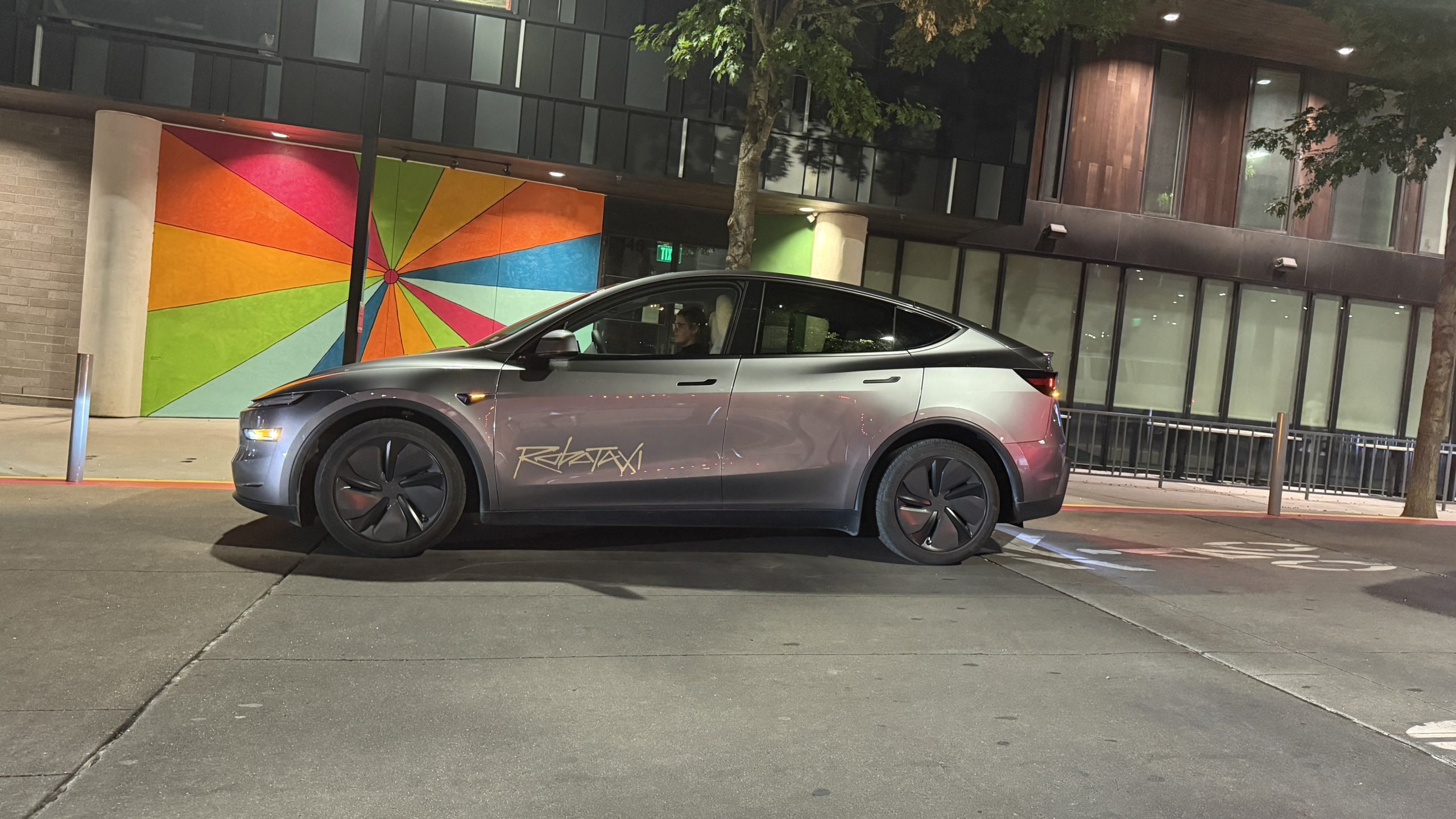
Elon Musk hinted at when Tesla could begin reducing Safety Monitors from its Robotaxis. Safety Monitors are Tesla employees who sit in the front passenger seat during the driverless rides, and are there to ensure safety for occupants during the earliest rides.
Tesla launched its Robotaxi fleet in Austin last Sunday, and after eight days, videos and reviews from those who have ridden in the driverless vehicles have shown that the suite is safe, accurate, and well coordinated. However, there have been a few hiccups, but nothing that has put anyone’s safety in danger.
A vast majority — close to all of the rides — at least according to those who have ridden in the Robotaxi, have been performed without any real need for human intervention. We reported on what was the first intervention last week, as a Safety Monitor had to step in and stop the vehicle in a strange interaction with a UPS truck.
Watch the first true Tesla Robotaxi intervention by safety monitor
The Tesla and UPS delivery truck were going for the same street parking space, and the Tesla began to turn into it. The UPS driver parallel parked into the spot, which was much smaller than his truck. It seemed to be more of an instance of human error instead of the Robotaxi making the wrong move. This is something that the driverless cars will have to deal with because humans are aggressive and sometimes make moves they should not.
The Safety Monitors have not been too active in the vehicles. After all, we’ve only seen that single instance of an intervention. There was also an issue with the sun, when the Tesla braked abnormally due to the glare, but this was an instance where the car handled the scenario and proceeded normally.
With the Robotaxi fleet operating impressively, some are wondering when Tesla will begin scaling back both the Safety Monitors and Teleoperators that it is using to ensure safety with these early rides.
CEO Elon Musk answered the inquiry by stating, “As soon as we feel it is safe to do so. Probably within a month or two.”
As soon as we feel it is safe to do so.
Probably within a month or two. We continue to improve the Tesla AI with each mile driven.
— Elon Musk (@elonmusk) June 30, 2025
Musk’s response seems to confirm that there will be fewer Teleoperators and Safety Monitors in the coming months, but there will still be some within the fleet to ensure safety. Eventually, that number will get to zero.
Reaching a point where Tesla’s Robotaxi is driverless will be another significant milestone for the company and its path to fully autonomous ride-sharing.
Eventually, Tesla will roll out these capabilities to consumer-owned vehicles, offering them a path to generate revenue as their car operates autonomously and completes rides.
For now, Tesla is focusing on perfecting the area of Austin where it is currently offering driverless rides for just $4.20 to a small group of people.
-

 News5 days ago
News5 days agoTesla Robotaxi’s biggest challenge seems to be this one thing
-
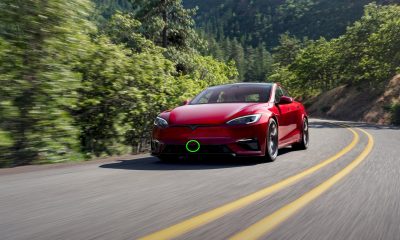
 News2 weeks ago
News2 weeks agoTesla confirms massive hardware change for autonomy improvement
-

 Elon Musk2 weeks ago
Elon Musk2 weeks agoElon Musk slams Bloomberg’s shocking xAI cash burn claims
-
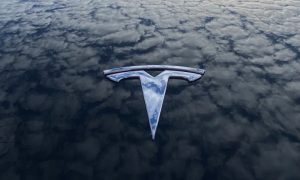
 News2 weeks ago
News2 weeks agoTesla features used to flunk 16-year-old’s driver license test
-

 News2 weeks ago
News2 weeks agoTesla China roars back with highest vehicle registrations this Q2 so far
-

 News2 weeks ago
News2 weeks agoTexas lawmakers urge Tesla to delay Austin robotaxi launch to September
-

 News2 weeks ago
News2 weeks agoTesla dominates Cars.com’s Made in America Index with clean sweep
-

 News2 weeks ago
News2 weeks agoTesla’s Grok integration will be more realistic with this cool feature



























